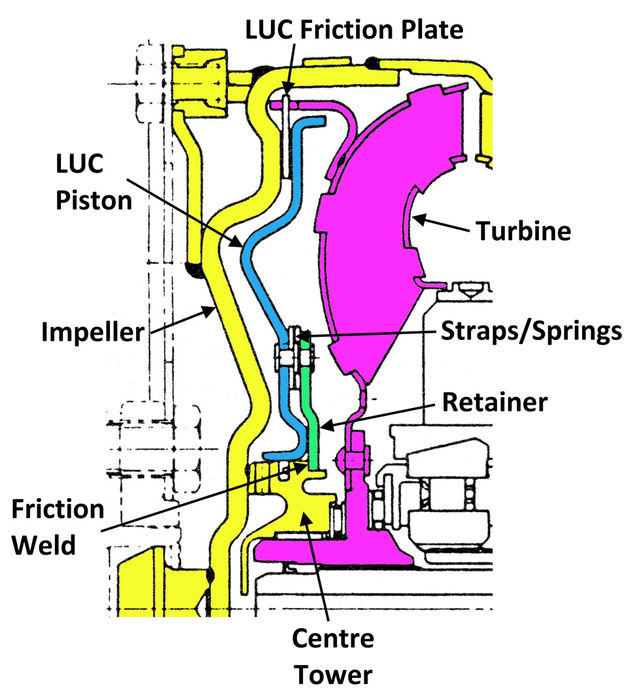 | Home > Technical (L322) > Judder Stutter Up Hill 3.6 TDV8 |
 
|
|
|
| RRPhil Member Since: 22 Aug 2011 Location: Blackburn, Lancashire Posts: 1044 
|
The turbine speed is simply a reflection of the vehicle speed and the gear ratio. In this case, 3rd gear ratio for the 6HP26 is 1.5211 i.e. (71+37)/71, so the 1200rpm turbine speed is equivalent to 789rpm propshaft speed (1:1 transfer box ratio in high range). For a final drive ratio of 3.5385 i.e. 46/13, the driveshaft/wheel speed is therefore 222.9rpm and so, based on a tyre rolling radius of 382mm (255/55 R19 or 255/50 R20 tyres) the vehicle speed immediately following the 2-3 upshift is 32km/h.
|
||
|
| umitbat Member Since: 06 Jan 2010 Location: Space Posts: 433  
|
Thanks again Phil.
|
||
|
| RRPhil Member Since: 22 Aug 2011 Location: Blackburn, Lancashire Posts: 1044 
|
The fluid change could alter the static-to-dynamic frictional properties of the fluid which, in turn, could reduce the stick-slip vibration. Generally, though, this would be a short-term solution as the lock-up clutch friction plate is worn and will need to be replaced eventually. Maybe it’s bought you some time, though.
|
||
|
| umitbat Member Since: 06 Jan 2010 Location: Space Posts: 433  
|
Thanks mate.
|
||
|
| RRPhil Member Since: 22 Aug 2011 Location: Blackburn, Lancashire Posts: 1044 
|
Yes, I think that’s probably true, and there are a couple of reasons for this.
|
||||
|
| umitbat Member Since: 06 Jan 2010 Location: Space Posts: 433  
|
All are engineered to visit service shops;) 2010 3.6tdv8 180k km.
|
||
|
 
|
|
| All times are GMT |
< Previous Topic | Next Topic > |
Posting Rules
|
Site Copyright © 2006-2025 Futuranet Ltd & Martin Lewis
![]()


